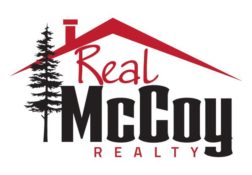
For most Americans, being able to buy a home or property with cash is not a reality. Because of this, banks and other lenders offer mortgage loans to those that qualify. A mortgage loan isn’t a bad thing – for millions of Americans, it’s a way for them to have their own home. As with any popular subject, there are some common myths surrounding mortgage loans. While not every buyer will need a mortgage loan, it’s important to discern the myths from the facts when it comes to mortgages in the United States.
(1) “You need to have 20 percent for a down payment”
This is probably one of the most popular myths surrounding mortgage loans, and it’s also one of the most outdated. While it may have been a requirement generations ago, a buyer does not need to have 20 percent of a home’s purchase price in order to qualify for a mortgage loan. While it may be financially better to put down 20 percent (the total loan amount will be less with a bigger down payment amount), there are a number of different loans and options that allow potential buyers to get a mortgage with less than 20 percent down. An FHA mortgage for first-time buyers requires 3.5 percent down; VA mortgages allow for zero down; USDA home loans require nothing down; and a number of other programs allow buyers to put anything from 3 to 10 percent down. If you’re thinking of buying a home and you know you’ll need a mortgage loan, don’t be fooled by the 20 percent down myth – there are way more options out there now than there used to be.
“Once you’re pre-qualified you’re guaranteed the loan”
It may seem like, with the steps you go through to get pre-qualified, that a mortgage loan will be a sure thing. But that’s not the case. Pre-qualification is not pre-approval. Pre-qualification is the initial step in the mortgage process, and while it’s an important one as it can give a person an idea of a mortgage loan amount they may receive from a lender, it is not the actual approval. Pre-qualification usually does not include a credit report analysis or an in-depth look into one’s ability to buy a home. Because of this, being pre-qualified is not a sure thing and it’s not a guarantee of a mortgage loan. There have been buyers who have been pre-qualified only to be told they were not actually approved for the mortgage loan itself. All of this being said – if you’re looking at homes and know you’ll need a mortgage loan, get pre-approved before you decide to make any offers. Even pre-approval comes with certain conditions, but is much better than a pre-qualification.
(2) “You need excellent credit and no debt to get a loan”
There are a number of factors that go into mortgage approval, and while creditworthiness and debt-to-income ratio are both considered, you do not need to be ‘excellent’ in either of these areas in order to get a mortgage loan. The minimum credit score necessary for a conventional loan is 620, and an FHA loan with 3.5% down requires a score of 580. With the median FICO credit score in the U.S. at 700, a buyer doesn’t need to have excellent credit in order to qualify for a mortgage loan. As for debt-to-income (DTI) ratio: while it’s best to have as little debt as possible when looking to purchase a home, Fannie Mae and Freddie Mac (government-sponsored agencies that publish standards for conventional mortgage approval) have the maximum allowable DTI at 50 percent, meaning those with current debt are not at a loss when it comes to qualifying for a mortgage loan.
“30-Year fixed-rate mortgages are the best option”
The financial and housing crisis that occurred in the U.S. in the late 2000s left a sour taste in the mouths of many Americans when it comes to non-traditional mortgage loans. Adjustable rate mortgages and mortgages other than fixed-rate were seen as bad and predatory. While some lenders took advantage of hard working Americans and many people lost their homes, non-traditional mortgage loans are not a bad thing, especially for certain buyers. A 30-year fixed-rate mortgage is a great option for someone that plans on staying in his/her home for many years, but for someone that knows they’ll likely move within five to seven years, an adjustable rate mortgage might be a better option. Fixed rate loans also come in other than 30 year terms; shorter lengths have a higher monthly payment but can save a lot of interest charges. Those buyers looking to retire soon may be better off with a shorter loan length than someone who is younger and still has many more years in the job force. If you’re in the market for a mortgage, it might be worthwhile to look at all the options available and see which one best aligns with your personal and career goals – it may not be the traditional mortgage loan.
(3) “Everyone receives the advertised interest rate”
It’s often said if it’s too good to be true, it generally is. The same can be said for mortgage interest rates. When looking for a loan, interest rates will be listed online, in newspapers and wherever else they advertise. Those advertised rates will likely look great and will be incredibly low, but the reality is that most of the time, advertised interest rates are only reserved for those who have a perfect credit score, have an incredible debt-to-income ratio, and are likely putting down a very large down payment. Interest rates are influenced by a number of factors, which of course aren’t included in the advertisement (just in the incredibly small fine print); because of this, take all advertised interest rates with a grain of salt and go into the mortgage loan process with the understanding that you may not receive the advertised interest rate.
Mortgage loans can be confusing and intimidating, especially with the number of myths out there about them. If you still have questions, I CAN HELP… or refer you to someone that can. Buying a home with a mortgage loan is still widely popular in the U.S. – don’t let the myths fool you out of achieving the goal of home ownership.
~The Real McCoy
via: Reliance Network, LLC

